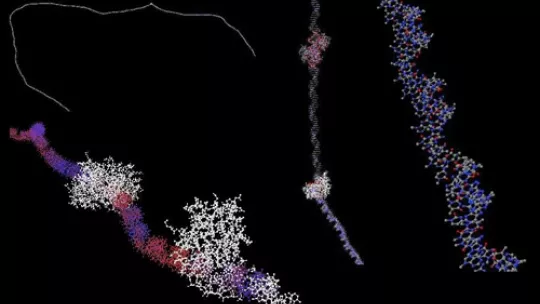Images
Researchers with the joint programme Institute for Research in Biomedicine (IRB Barcelona)- Barcelona Supercomputing Center (BSC) on Computational Biology, together with scientists at Center for Genomic Regulation (CRG) have discovered a hidden DNA structural code that provides novel insights on gene expression. The results are available in the electronic version of Nucleid Acids Research.
Gene expression is a complex process regulated by many different molecular mechanisms; the location of promoters is key to understand it. In particular, one of the biggest challenges is the location of promoters such as the transcription start sites (TSSs) – sequences of DNA that code for a particular protein with a certain function in the cell.
Traditionally, the specific DNA sequence on promoter regions has been considered as the most important regulatory element in transcription (the first step leading to gene expression). But a new paradigm is proposed in the study: promoters can be defined, not only by their sequence, but also by their structure, characterized by distinctive physicochemical properties that will bring an unusual physical deformability (shift, slide, twist, tilt, roll) which might favour protein recognition.
Scientists have used theoretical methods to characterize physical properties of DNA, using them to localize “de novo” promoters that were then validated experimentally. “A strikingly large number of theoretical predictions, which were considered ‘false positives’ based on previous knowledge, have been proved after experiments true promoters that are transcriptionally active despite the lack of specific sequence,” says Modesto Orozco, director of the joint programme IRB Barcelona-BSC on Computational Biology and group leader of the "Molecular modelling and bioinformatics". The project illustrates the possibility for fruitful collaborations between theoretical and experimental groups based in different institutions.
This study has shown that not only DNA sequence is important but also its structure. So, scientists can use DNA physical signalling which is able to detect promoter activity beyond conventional prediction methods.
Reference article:
Unravelling the hidden DNA structural/physical code provides novel insights on promoter location
Elisa Duran, Sarah Djebali, Santi Gonzalez, Oscar Flores, Josep Maria Mercader, Roderic Guigo, David Torrents, Montserrat Soler-Lopez and Modesto Orozco
Nucleic Acids Research (2013) doi: 10.1093/nar/gkt511
About IRB Barcelona
The Institute for Research in Biomedicine (IRB Barcelona) pursues a society free of disease. To this end, it conducts multidisciplinary research of excellence to cure cancer and other diseases linked to ageing. It establishes technology transfer agreements with the pharmaceutical industry and major hospitals to bring research results closer to society, and organises a range of science outreach activities to engage the public in an open dialogue. IRB Barcelona is an international centre that hosts 400 researchers and more than 30 nationalities. Recognised as a Severo Ochoa Centre of Excellence since 2011, IRB Barcelona is a CERCA centre and member of the Barcelona Institute of Science and Technology (BIST).





